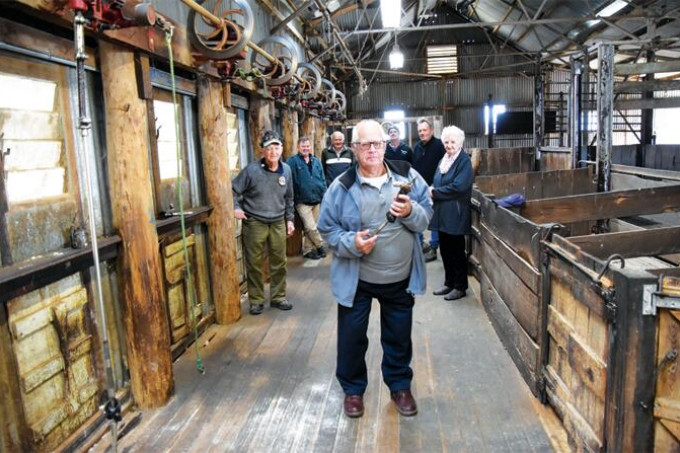General News
11 January, 2023
Day of the big roar
SUMMER READINGBy CHRIS EARLTHE FAME of Jack Howe spread to shearing sheds across Australia in the 1890s. The Queensland shearer set a record of 321 sheep in one day back in 1892. It would be more than half a century later when Howe’s record fell. At...

SUMMER READING
By CHRIS EARL
THE FAME of Jack Howe spread to shearing sheds across Australia in the 1890s.
The Queensland shearer set a record of 321 sheep in one day back in 1892.
It would be more than half a century later when Howe’s record fell.
At the Harrison family’s Hopefield property, near Durham Ox, Alf Parsons was there on that October 1957 day.
He remembers Kevin Sarre priming himself for a tilt at the record and the cheer that went up in the shed when 326 large crossbred lambs - ewes and wethers - had their fleeces removed in under eight hours.
Last week, Alf was back in the historic shed for one last look at the shearing stand before it is replaced and put in storage ready for display in Pyramid Historical Society’s planned machinery and engine display.
Alf looked over Hopefield’s shearing records for that day, recalling he was in Kevin’s shearing team that spring and was in the shed with Len and Bob Scott, Rupert Watson, Lou Johns, Dan Cahill, Brian Clohesy, Tom Perks and Jack Townsend.
It was just a few years after the shearing shed had been built over. Century-old boards and pens given a new galvanised iron canopy that would be the setting for Kevin’s first world record.
Jack Harrison, too, remembered the day: “All the shearers knew he was going for the record.”
“When the last sheep went out, there was one hell of a roar,” said Alf. “They were all done on narrow gear and they were big sheep ... merino-corriedale cross.”
“There were normally six shearers in each team but that day justfive of us.”
Alf had his introduction to shearing in 1949 when a student in Echuca and a teacher suggested it might be better for him to spend four weeks helping at a shearing school than sitting in the classroom
“They got me back for the next four years,” he said.
Alf then went working the sheds as a roustabout, classer and shearer.
“Kevin would have me shearing sheep but sometimes classers wanted to sack me for not doing the job I was there to do,” he said.
When he finally started shearing full time, the first day didn’t go to plan and Alf spent six weeks in hospital with rheumatic fever
He finished shearing 20 years ago, and now aged 84, looks back on a life shearing and milking cows with fondness but none more than that history-making day at Hopefield..
Alf is the last surviving member of that team, please make last week’s trip to Hopefield.
He said Kevin was a pioneer in using the Tally-hi method that overtook the Bowen Technique and was promoted by the Australian Wool Corporation, reducing sheep struggle on the stand and saving about 30 seconds in shearing each animal.
Kevin won shearing’s national championship five times, was Golden Shears Winner in 1963 and upped the world record in 1965 with 346 merinos.
Pyramid Hill Historical Society president Allan Mann, who joined Alf and the Harrisons for last week’s visit, said displaying the overhead gear in the town’s new machinery museum would help tell the story of the wool industry. “And there will be an educational side for future generations, telling the story ... history should never be lost. History makes us what we are today,” he said.
Chris Harrison said Kevin had been legendary across the area both for the record and how his team pioneered Tally-hi “that’s the predominant shearing method used in Australia now”.
The engines that power the record-breaking shears will be replaced with new Eco Shearing Plant motors driving much wider and more efficient combs than those used by Jack Howe in the 19th century and Kevin Sarre in the 1950s and 1960s.